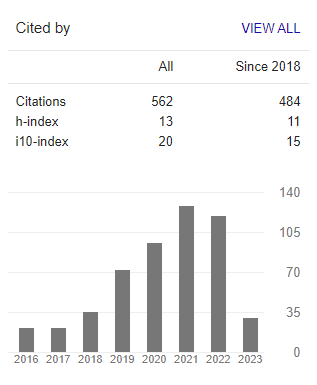JURNALISME GAME DAN MEMBAURNYA KARAKTER KONTEN MEDIA: Studi Kasus the Lazy Monday, Gamebrott dan Playverse
Abstract
Game journalism develops along with the development of the gaming industry, increasingly sophisticated information and communication technology, as well as increasingly convergent institutionalization of new media. The purpose of this research is to understand game specialist journalism and blend the study of content production. The research method used is a case study with a constructionist perspective. Data collected through interview, content review, and literature review related to journalism, games, and the media industry. The mixed character of the media content in game news is, among others, reviewed through media institutions, media practices, namely: planning, management, production and distribution, and through dimensions in journalism.
To cite this article (7th APA style):
Adiputra, W. M. (2018). Jurnalisme Game dan Membaurnya Konten Media: Studi Kasus the Lazy Monday, Gamebrott dan Playverse [Game Journalism and the Immersion of the Media Content Character]. Journal Communication Spectrum, 8(2), 166-189. http://dx.doi.org/10.36782/jcs.v8i2.1853
Keywords
References
Allan, S. (2004). News Culture. Second Edition. Open University Press.
Beck, J. C. & Wade, M. (2007). Gamers Juga Bisa Sukses: Beginilah Cara Generasi Gamer Mengubah Lingkungan Kerja. Grasindo.
Bolter, J. D. & Grusin, R. (1999). Remediation: Understanding New Media. The MIT Press.
Chater, K. (2002). Research for Media Productiion. Second Edition. Focal Press.
Conboy, M. (2013). Journalism Studies: The Basic. Routledge.
Creswell, J. W. (2014). Research Design: Qualitative, Quantitative and Mixed Methods Approaches. Sage.
Dovey, J. & Kennedy, H. W. (2006). Game Cultures: Computer Games as New Media. Open University Press.
Dwyer, T. (2010). Media Convergence. Open University Press.
Eddyono, A. S. (2013). Twitter: Kawan, Sekaligus Lawan Bagi Redaksi Berita. Journal Communication Spectrum: Indonesian Journal of Communication and Culture, 3(1), 47-65
Flew, T. (2014). New Media. Fourth Edition. Oxford University Press.
Fuchs, C. (2014). Social Media: A Social Introduction. Sage.
Grant, A. E. & Wilkinson, J. S. (eds) (2009). Understanding Media Convergence: The State of the Field. Oxford University Press.
Hesmondhalgh, D. (2013). The Cultural Industries. Third Edition. Sage.
Holt, J. & Perren, A. (eds) (2009). Media Industries: History, Theory, and Method. Wiley-Blackwell
Jenkins, H. (2006). Fans, Bloggers, and Gamers: Exploring Participatory Culture. New York University Press
Jones, J. & Salter, L. (2012). Digital Journalism. Sage.
Maras, S. (2013). Objectivity in Journalism. Polity Press.
McQuail, D. (1992). Media Performance: Mass Communication and the Public Interest. Sage.
McQuail, D. (2010). Mass Communication Theory. Sixth Edition. Sage.
McQuail, D. (2013). Journalism and Society. Sage.
Pavlik, J. V. & McIntosh, S. (2011). Converging Media: A New Introduction to Mass Communication. Oxford University Press.
Smith, M. C. & Kollock, P. (eds) (1999). Communities in Cyberspace. Routledge.
Turner, B. & Orange, R. (eds) (2013). Specialist Journalism. Routledge.
Yuwono, A. I., Simatupang, G. R. L. L. & Salam, A. (2018). Pewujudan dan penyerapan Pemain dalam Video Game. Journal Communication Spectrum, 8(1), 94-112.
Refbacks
- There are currently no refbacks.

This work is licensed under a Creative Commons Attribution 3.0 License.
Indexed by:
Archived in:
Listed in:
INTERNATIONAL ASSOCIATION FOR MEDIA AND COMMUNICATION RESEARCH

















